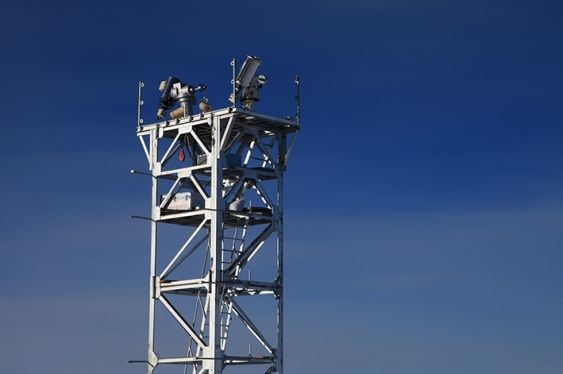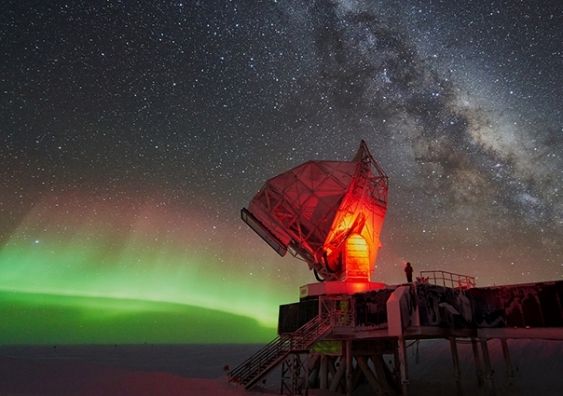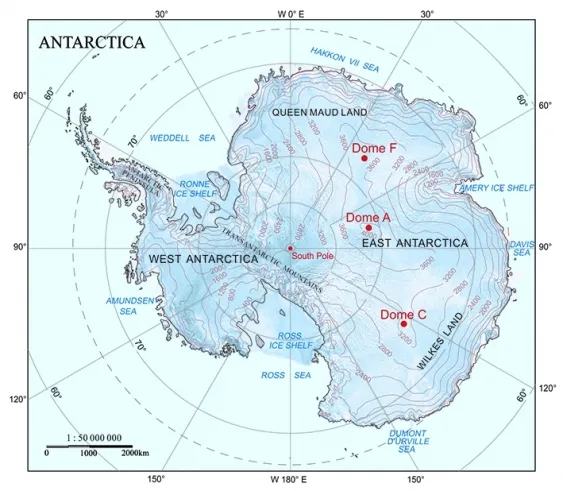This Might Be the Best Stargazing Spot on Earth, According to Scientists
A frigid hill near Antarctica’s South Pole has all the qualifications to be a superior telescope site, researchers say
/https://tf-cmsv2-smithsonianmag-media.s3.amazonaws.com/filer/47/64/476486ee-ef42-449a-8836-9ae4c97ee2d7/dome_a.jpg)
Scientists have identified what they think is the best place in the world to stargaze—but don’t make any travel plans just yet. Dome Argus or “Dome A,” as the site is known, sits on a high, frigid plateau 746 miles inland on Antarctica.
An international team of scientists, led by Zhaohui Shang with the Chinese Academy of Sciences, studied three sites in the frozen continent—Domes A, F, and C—to figure out which might make the best potential telescope site. Dome A won out, according to a statement.
Researchers measured Dome A’s stargazing potential with a specialized telescope placed on a 26-foot-high platform on the site. The telescope was specially designed to withstand Antarctica’s freezing temperatures, and the entire apparatus was operated remotely by researchers.
As the team wrote in an article in Nature last month, one key feature distinguished Dome A from all the rest: The stars “literally twinkle less” up there, as Brandon Specktor notes for Live Science.
Stars appear to twinkle in the night sky because of atmospheric turbulence, the result of winds that interact with the Earth’s terrain and interfere with starlight as it journeys from outer space to our eyes and telescopes. Dome A sits nearly 2.5 miles high in the middle of a flat plateau, which means that atmospheric turbulence is greatly reduced.
“Dome A is the highest point in the central plateau region of Antarctica, and the atmosphere is extremely stable here, much more so than anywhere else on Earth,” Michael Ashley, an astronomer with the University of New South Wales (UNSW), Sydney who was involved in the research, explains in a statement. A slow, smooth wind blows over the expanse of ice and snow.
“The result is that the twinkling of the stars is greatly reduced, and the star images are much sharper and brighter,” continues Ashley.
Scientists describe a given site’s atmospheric turbulence in terms of its “seeing,” as Chelsea Gohd reports for Space.com.
“Bad seeing smears your images from a telescope,” lead researcher Zhaohui Shang at the Chinese Academy of Sciences in Beijing tells Leah Crane for New Scientist. “At a site with good seeing, a telescope can outperform a similar telescope at a site with worse seeing.”
For example, important stargazing sites in Chile and Hawai’i have “seeing” that ranges between 0.6 and 0.8 arcseconds. Dome A boasts nighttime seeing as low as 0.31 to 0.13 arcseconds, which is “astoundingly low,” reports Space.com.
Dome A also has cold, dry air, which makes for exceptionally clear night skies. In mid-winter, the site experiences “polar night”—multiple 24-hour periods of uninterrupted darkness—which would allow for maximum stargazing opportunities, per the UNSW statement.
“The combination of high altitude, low temperature, long periods of continuous darkness, and an exceptionally stable atmosphere makes Dome A a very attractive location for optical and infrared astronomy,” Paul Hickson, an astronomer with the University of British Columbia involved in the research, says in a statement.
Hickson adds: “A telescope located at Dome A could out-perform a similar telescope located at any other astronomical site on the planet.”
/https://tf-cmsv2-smithsonianmag-media.s3.amazonaws.com/accounts/headshot/nora.png)



/https://tf-cmsv2-smithsonianmag-media.s3.amazonaws.com/accounts/headshot/nora.png)